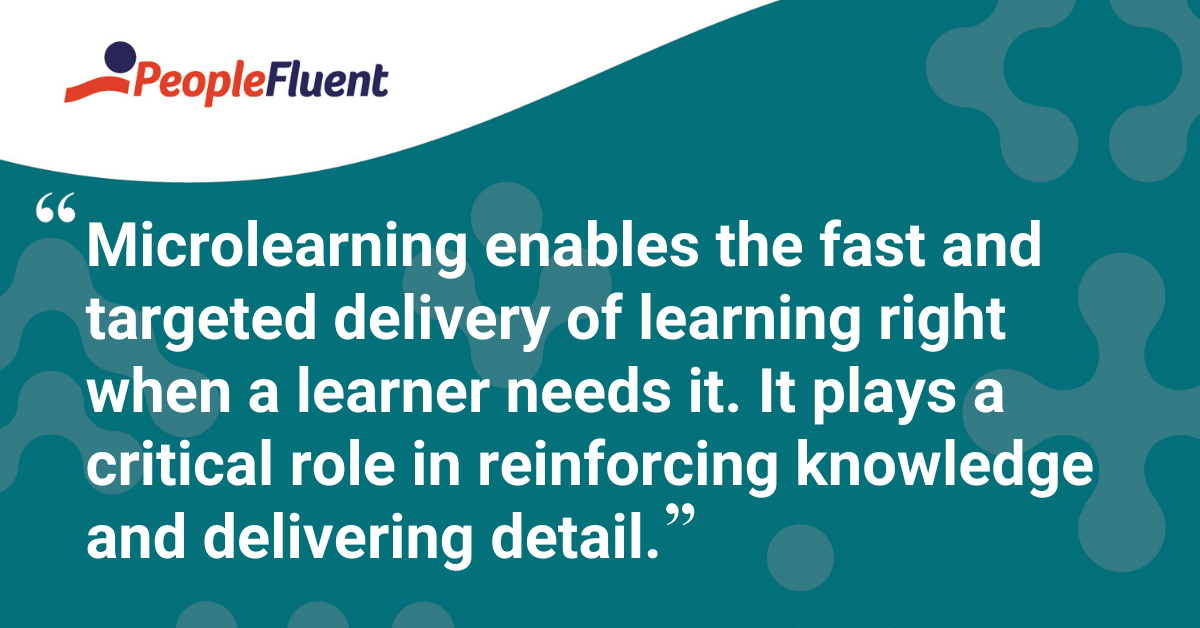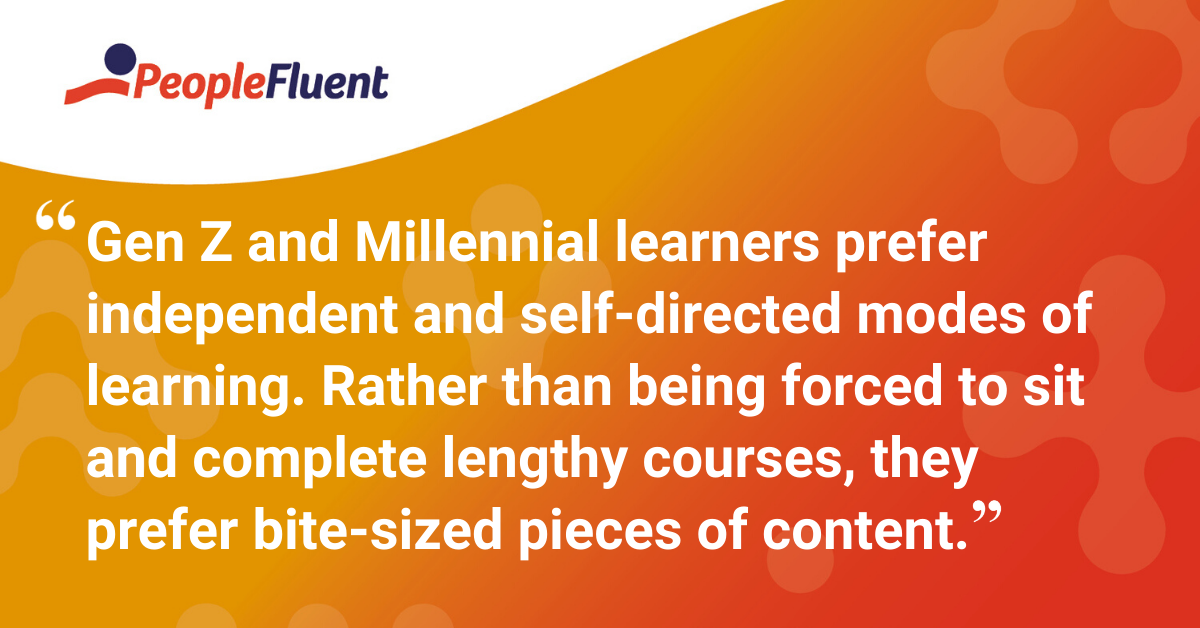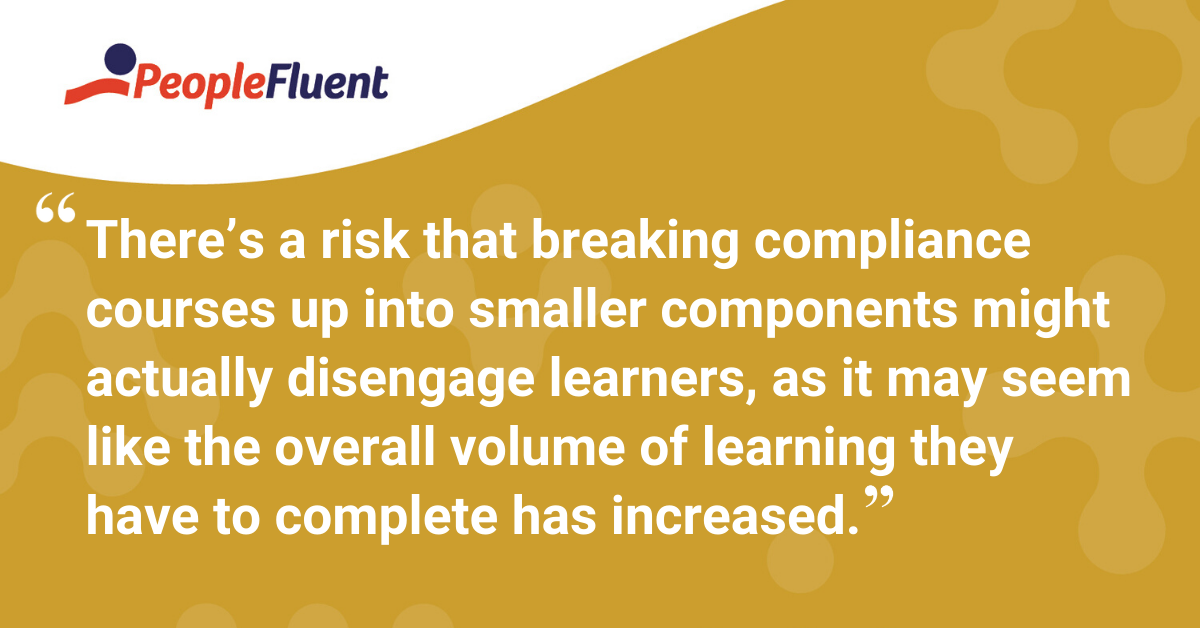Published: Apr 5, 2019Time to read: 6mins Category: Learning
3 Reasons Why Microlearning Should Be an Essential Part of Your Learning Strategy
Microlearning has been a big trend in the learning and development world for some time now. In this blog post, we take a look at the benefits of making microlearning a key component of your learning strategy.
Learning trends come and go, but the ones that tend to stick around are those that deliver real value and results for L&D teams and their organizations. Microlearning is one such trend that has transferred from ‘buzzword’ to an essential component of many organizations’ learning strategies.
If you’ve not come across microlearning before, here’s a quick primer:
What Is Microlearning?
Microlearning has been defined in many different ways, but most agree that microlearning is:
- A discrete chunk or ‘burst’ of learning that focuses on a small set of learning objectives or single topic
- Usually no longer than around 5-7 minutes, although it can be as short as one minute
- Often created using video or animation to distill key learning messages
- A slightly more informal way of delivering learning compared to a traditional, formal training course
Microlearning can be delivered in pretty much any format you can imagine, from a simple PDF to a bite-sized learning game. It can be user-generated (or learner-generated) in the form of self-shot videos or a concise eLearning module.
Microlearning can be contrasted with what Josh Bersin, has called ‘macrolearning’. Macrolearning is what most of us think of as traditional learning, for example, a one-hour course that tackles a range of learning objectives in some depth.
What Are the Benefits of Microlearning?

The benefits of implementing microlearning could be said to be down to the fact it’s better suited to meet the needs of today’s organizations, and their learners.
Here are three reasons why microlearning should be part of your learning strategy:
1. Microlearning Delivers Learning in the Flow of Work
Today’s employees need to be able to quickly adapt to the rapidly-evolving nature of work. Gaining new skills and knowledge is an essential part of keeping up with the fast pace of change that many organizations now have to operate in to maintain relevancy, and ultimately, business success.
How does microlearning help in this context? It enables the fast and targeted delivery of learning right when a learner needs it. Macrolearning-style interventions may be required to initially get learners onboard with new skills or processes, but microlearning plays a critical role in reinforcing that knowledge and delivering the detail exactly when it’s needed.
A few examples of this could be:
- Access to video recaps on key processes in new software programs
- PDFs that give handy access to detailed specs and features on recently launched products
- Bite-size eLearning modules on sales skills that could be quickly viewed before a big presentation
2. Microlearning Makes it Easier to Learn on the Go
Microlearning and mobile learning go hand-in-hand in an effective learning strategy.
With the vast majority of learners now freed from the confines of desktop PCs and able to use either their own or company-issued tablets and cellphones, learning can now take place anytime, anywhere.
Because microlearning delivers learning in short chunks, it’s very well suited to learning on the go and making the most of short snatches of spare time. According to research by Deloitte, staff tend to able to spend just 1% of their working week on training and development. Microlearning can be an effective strategy to help learners to make the most of their time.
3. Microlearning Enables More Self-Directed Learning

Research has shown that today’s learners, particularly those that are more recent entrants to the workplace, prefer to learn at their own speed and pace. LinkedIn’s 2019 Workplace Learning Report, which surveyed over 2,100 learners, found Generation Z and Millennial learners were more in favor of independent and self-directed modes of learning.
That means rather than being forced to sit and complete a lengthy course, they can access bite-sized pieces of content at a time and place that suits them. And depending on how the learning is presented, they may also have the freedom to pick and choose between different learning modes—whether that’s watching content, reading or more interactive learning.
This is more of a ‘pull’ rather than ‘push’ method of delivering learning and involves carefully curated learning programs of a range of learning components. While this might sound like a more complicated and difficult to manage way of delivering learning, with the right platforms and tools, you can easily host and track all the different elements of a curated learning program.
Recommended related reading: 'The 13 Must-Have Features of a Learning Management'
Microlearning and Compliance Training

It’s worth noting that learners working in highly regulated industries often have to complete a range of mandatory compliance courses, either annually or bi-annually.
In this instance, a different approach to microlearning may be required. There’s a risk that breaking compliance courses up into smaller components might actually disengage learners, as it may seem like the overall volume of learning they have to complete has increased. There’s also often a need to include rigorous assessments, which are often easier to add to the end of a single course, rather than trying to implement across multiple modules.
So when considering microlearning for compliance training, think about using the following approaches:
- Use microlearning as a companion to longer courses by delivering short bursts of content throughout the year to reinforce key learning points.
- Think about smart ways to ‘micro your macro’ by splitting a course into smaller topics and utilizing a range of different ways to deliver content in each one.
- Test-out features are a great way to deliver a microlearning experience in a different way. Here a learner completes a test at the start of the course. If they pass, they don’t have to complete the course at all and if they fail, they get recommendations on which topics to look at before attempting the test again.
Discover How Learning Builds Skills and Ensures Compliance
Design, deploy, track, analyze, and report on enterprise learning and compliance programs. PeopleFluent helps you execute your programs seamlessly, so employees upgrade their skills and you get results.